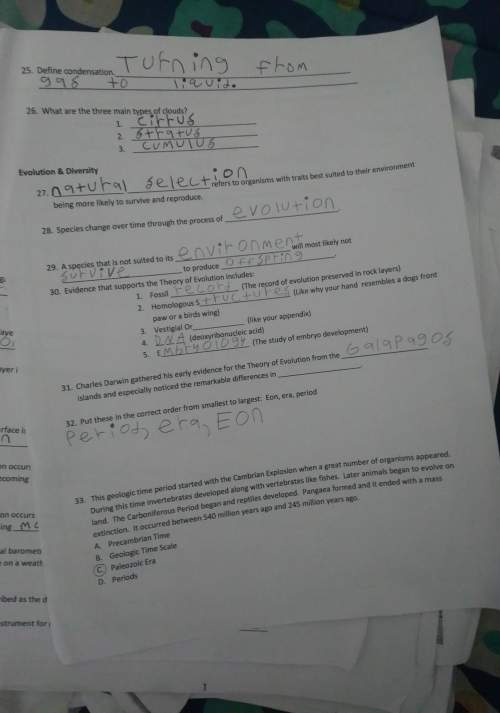
Physics, 20.06.2019 18:04 CutiePie6772
Which of the following is true about an object in free fall? its acceleration depends on its mass. it has no inertia. it pulls on earth, and earth pulls on it. its momentum is constant.

Answers: 1


Other questions on the subject: Physics

Physics, 21.06.2019 20:30, LunaSpellman
Which statement best describes how private industry decides where to spend the money on research and development
Answers: 1

Physics, 22.06.2019 10:50, infinitexero1022
Two rigid transformations are used to map δhjk to δlmn. the first is a translation of vertex h to vertex l. what is the second transformation? a reflection across the line containing hk a rotation about point h a reflection across the line containing hj a rotation about point k
Answers: 1

Physics, 22.06.2019 14:10, momo842
Your starship, the aimless wanderer, lands on the mysterious planet mongo. as chief scientist-engineer, you make the following measurements: a 2.50-kg stone thrown upward from the ground at 14.0 m/s returns to the ground in 5.70 s ; the circumference of mongo at the equator is 2.20×10^5 km ; and there is no appreciable atmosphere on mongo. (a) the starship commander, captain confusion, asks for the following information: what is the mass of mongo? (b) if the aimless wanderer goes into a circular orbit 2.20×10^4 km above the surface of mongo, how many hours will it take the ship to complete one orbit? (c) an unmanned spacecraft is in a circular orbit around the moon, observing the lunar surface from an altitude of 44.0 km . to the dismay of scientists on earth, an electrical fault causes an on-board thruster to fire, decreasing the speed of the spacecraft by 23.0 m/s . if nothing is done to correct its orbit, with what speed (in km/h) will the spacecraft crash into the lunar surface?
Answers: 1

Physics, 22.06.2019 15:00, koranbutterton
Astudent throws a water balloon with speed v0 from a height h = 1.76 m at an angle θ = 21° above the horizontal toward a target on the ground. the target is located a horizontal distance d = 9.5 m from the student’s feet. assume that the balloon moves without air resistance. use a cartesian coordinate system with the origin at the balloon's initial position. (a) what is the position vector, rtarge t, that originates from the balloon's original position and terminates at the target? put this in terms of h and d, and represent it as a vector using i and j. (b) in terms of the variables in the problem, determine the time, t, after the launch it takes the balloon to reach the target. your answer should not include h. (c) create an expression for the balloon's vertical position as a function of time, y(t), in terms of t, vo, g, and θ. (d) determine the magnitude of the balloon's initial velocity, v0, in meters per second, by eliminating t from the previous two expressions.
Answers: 3
You know the right answer?
Which of the following is true about an object in free fall? its acceleration depends on its mass....
Questions in other subjects:

Mathematics, 23.07.2020 08:01

Mathematics, 23.07.2020 08:01


Mathematics, 23.07.2020 08:01

Social Studies, 23.07.2020 08:01




Mathematics, 23.07.2020 08:01





